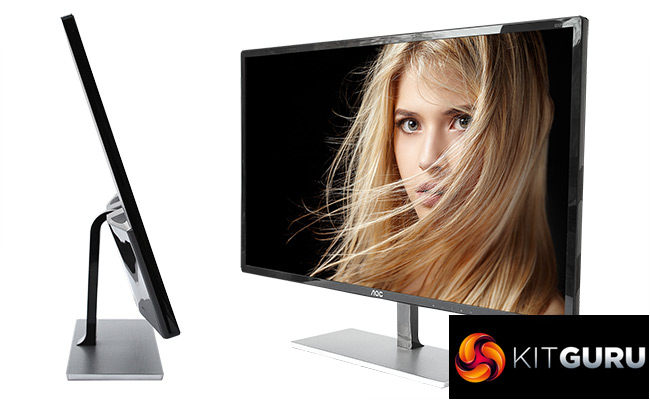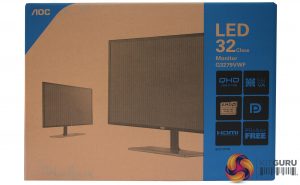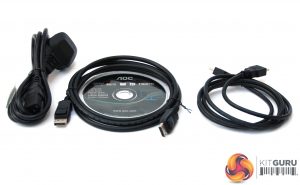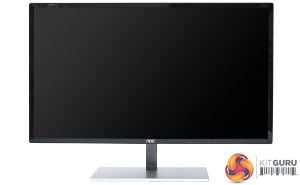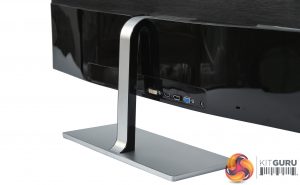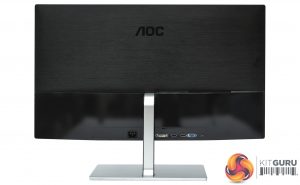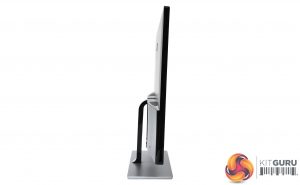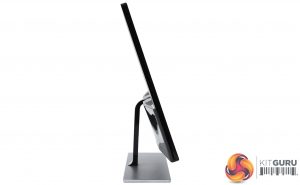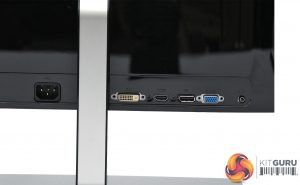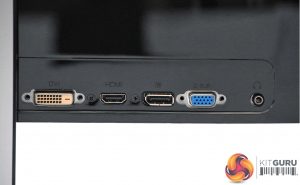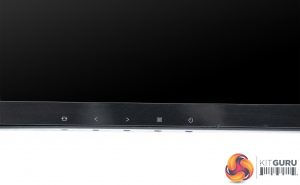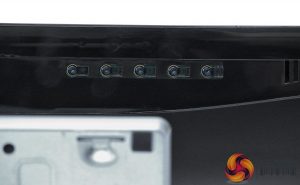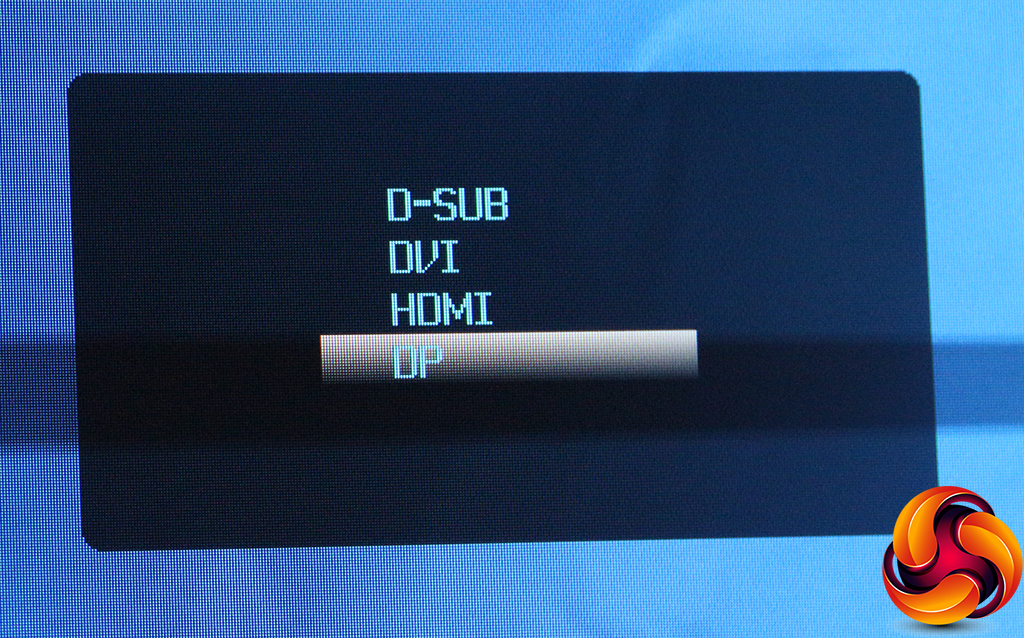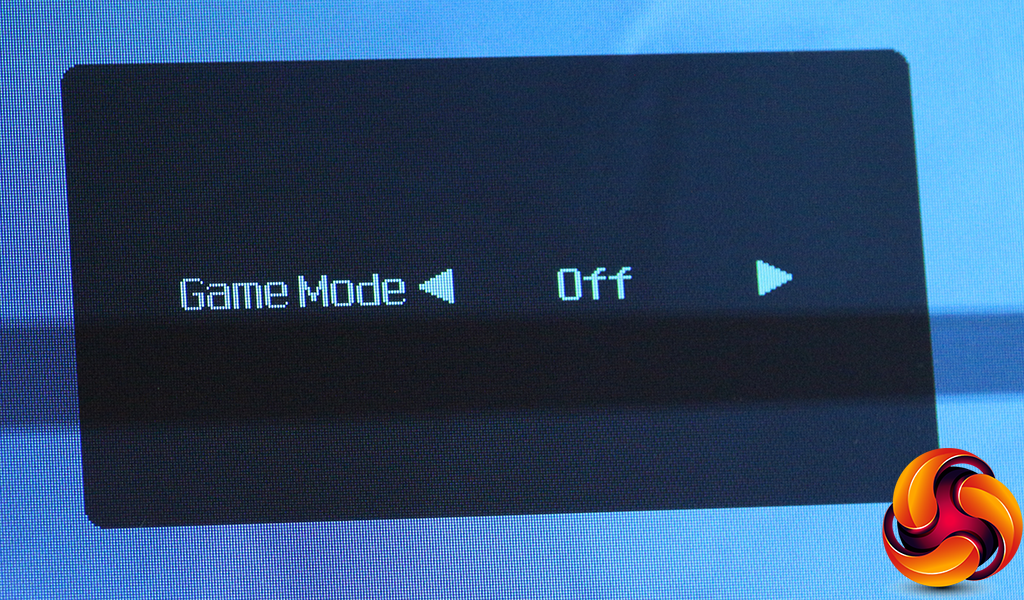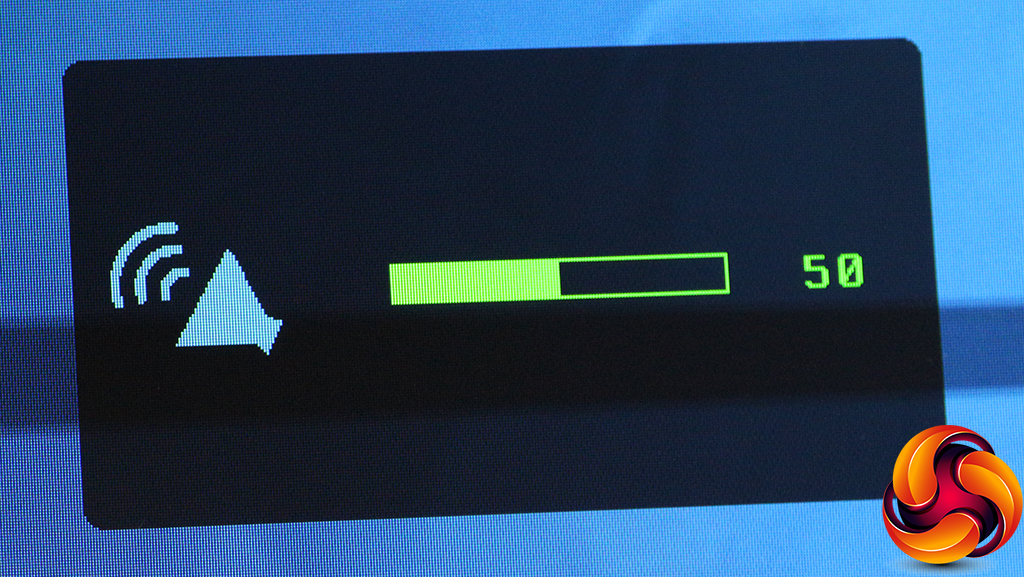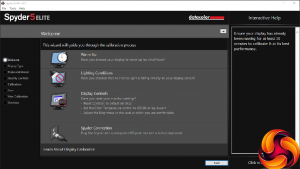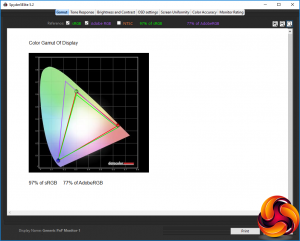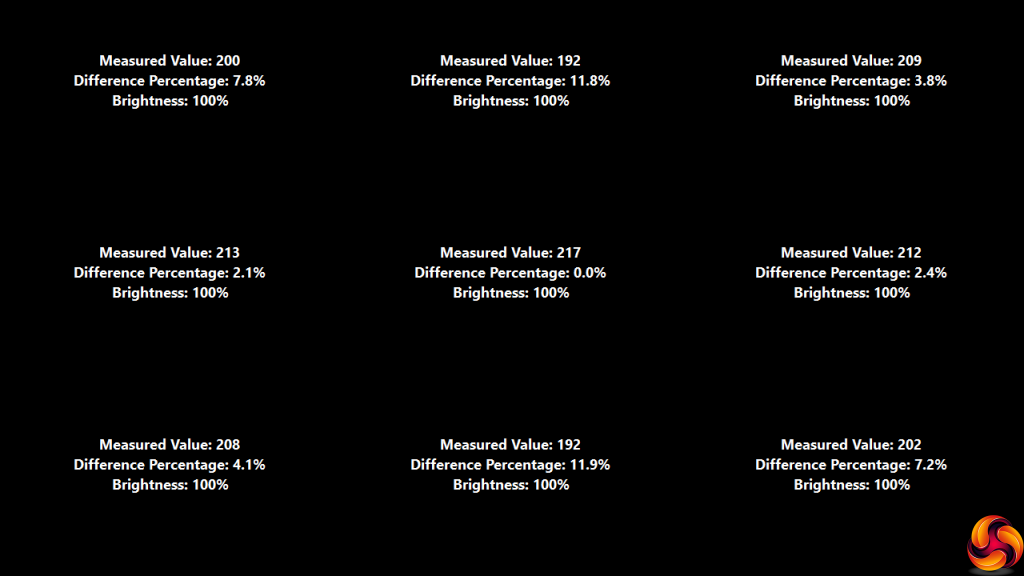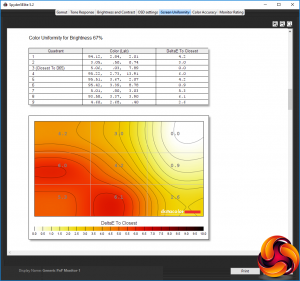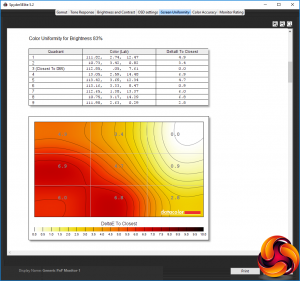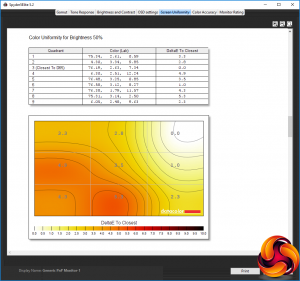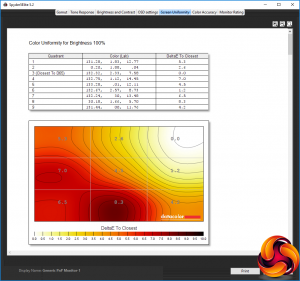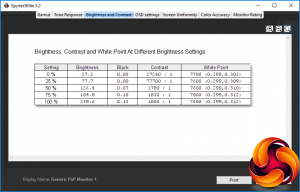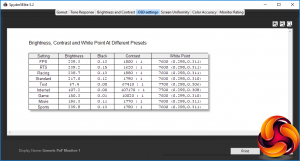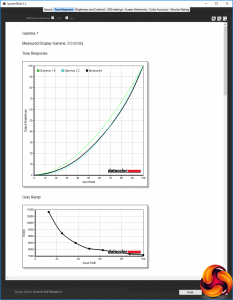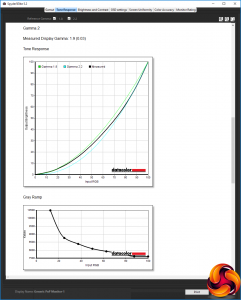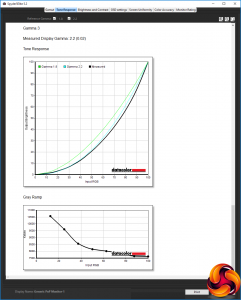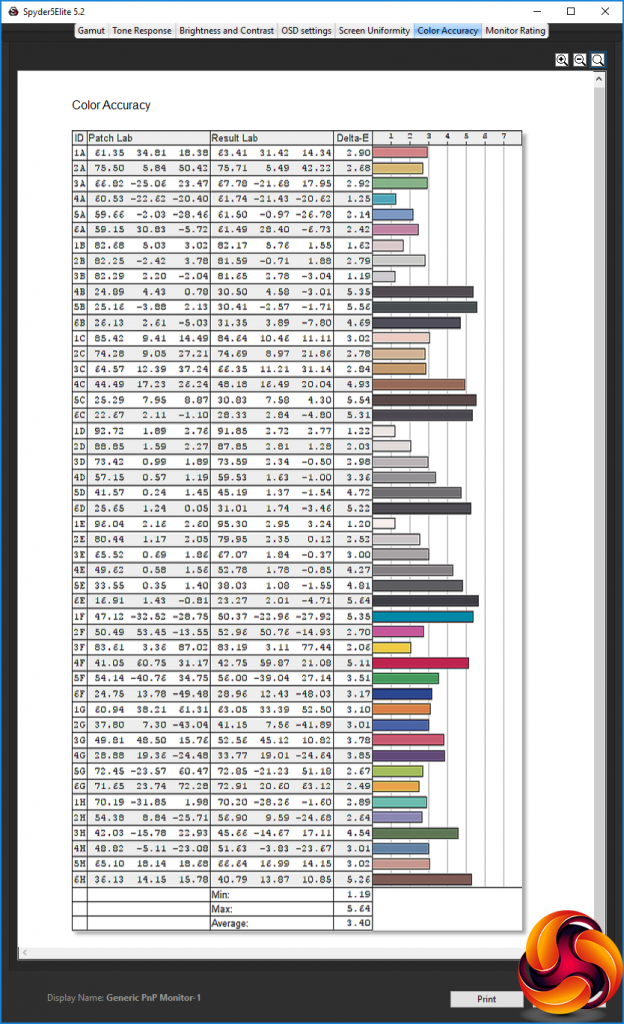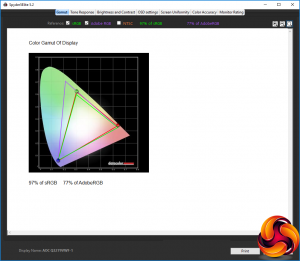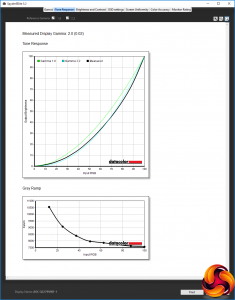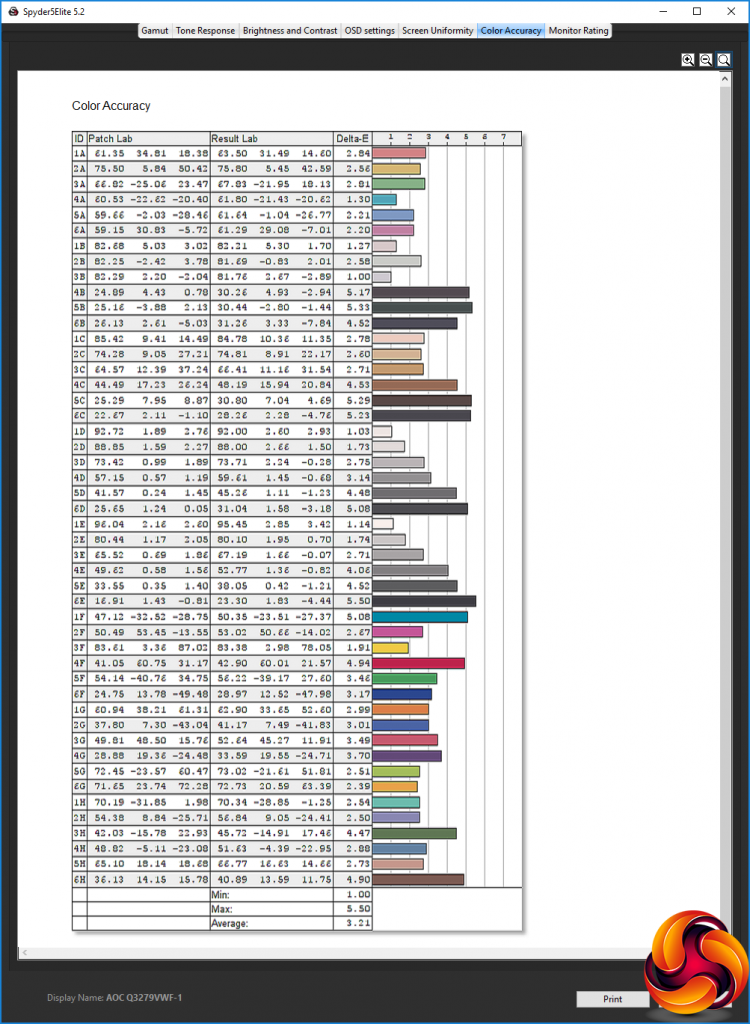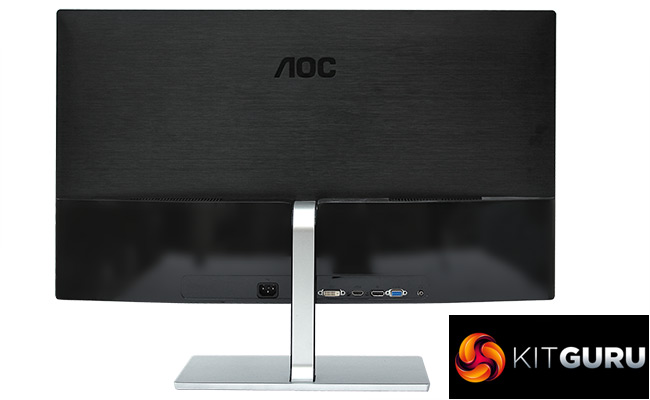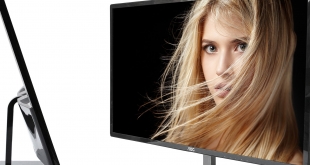
Screen sizes over 24in used to require budgets bordering on £500 and even beyond, particularly once the 30in boundary had been crossed. But with the Q3279VWF, AOC is offering a 31.5in display for significantly less than £300. In fact, at the time of this review the AOC Q3279VWF was available for £200, which is phenomenally cheap for this much screen area.
Aside from its 31.5in diagonal, the Q3279VWF offers the increasingly popular 2,560 x 1,440 resolution (4K would have been too much to ask for this price), and uses MVA technology, which provides some of the quality benefits of IPS without the price disadvantage. One of the pluses with MVA is contrast, and the Q3279VWF boasts a 3,000:1 ratio.
However, brightness is only 250cd/m2, and the traditional drawback of MVA (and IPS) is also evident – a relatively slow pixel response, in this case 5ms. The maximum refresh of 75Hz also won't be particularly enticing for gamers, although FreeSync is supported so you can have a refresh that varies with what your AMD graphics card is delivering.
However, you do get inputs for every occasion, with DVI and VGA on hand as well as DisplayPort and HDMI, although there are no built-in speakers or USB hub. Physical adjustments are also meagre, with just tilt available, not swivel or pivoting.
Nevertheless, for just £200, the Q3279VWF is still surprising value even without these additional niceties, assuming the core capabilities are sound. So let's find out if this really is the big-screen bargain it promises to be on paper.
Specification:
Screen size: 31.5-inch, 16:9 aspect, curved
Native resolution: 2,560 x 1,440
Refresh rate: 75Hz
Panel type: MVA
Contrast ratio: 3,000:1 (typical)
Brightness: 250cd/m2
Response time: 5ms Grey-to-Grey
Display inputs: HDMI 1.4, DisplayPort 1.2, DVI, VGA
USB hub: No
Tilt: Yes
Raise: No
Swivel: No
Other: Audio output
Retail Price: £199.99 (inc. VAT)
The AOC Q3279VWF is not a premium model, and the bare box signals this before you've even unpacked the unit.
Despite the rather unexciting packaging, you do get three different video cables in the box – VGA, HDMI and DispayPort – as well as the power cable. Our sample seemed to be missing the VGA cable, however.
The appearance of this display is decidedly sober, with a reasonably large bezel around the panel, and mildly glossy black the main theme. However, the stand uses brushed metal, which lends some class to the overall look.
There are no facilities to swivel or pivot the screen. You can't raise the level up and down either. The only option is tilting either two degrees forward or 21.5 degrees backward.
So you will need to physically move the screen to the optimal position for your viewing pleasure, which is an acceptable situation but far from perfect. There's also no ability to use a VESA attachment for wall mounting.
Another sign that this isn't a premium screen is the port arrangement. These aren't recessed or pointing downwards in a covered cavity. They're just stuck on the back pointing outwards. But at least you get a comprehensive selection for attaching any input type, with DisplayPort 1.2 and HDMI 1.4 (but not 2.0). There is also DVI and even VGA for legacy support.
There's an analog audio minijack output for routing digital audio from DisplayPort or HDMI to your speakers or headphones. The power supply is built into the screen itself, with a standard kettle lead used for connection to the mains socket.
Controlling the OSD menu is entirely conventional, with four buttons ranged along the bottom of the bezel towards the right-hand corner, plus a fifth for turning the power off and on.
The array of buttons may be pedestrian compared to the external controllers supplied with some of AOC's premium gaming monitors. But at least they're easy to reach and not hidden around the back.
The first button from the left calls up a very rudimentary menu allowing you to manually select the video input.
The next button along provides quick access to the gaming presets, which include FPS, RTS and Racing, plus three Gamer options that are user-configurable. This is also the button for moving left in menus.
The next button along provides fast access to controlling the volume of sound out of the analog audio port.
The fourth button from the left calls up the main menu, which is entirely different in appearance to the quick menus. The default page of the main menu is Luminance, where you can control Contrast, Brightness, Gamma, DCR mode and Eco Mode.
The Gamma Mode has three options, and the Eco Mode control is actually more like presets, with Standard, Text, Internet, Game, Movie, and Sports options. Turning DCR on enables dynamic contrast.
The Image Setup page isn't available with a digital input, only VGA, so the next page along is Color Setup. This provides Warm, Normal, Cool, sRGB and User colour modes. The latter allows direct control over RGB levels.
Note also that Warm is the default, when you would expect it to be Normal. There are also DCB modes, which are colour enhancements presets. Options include Full Enhance, Nature Skin, Green Field, Sky-blue and Autodetect.
AOC's Picture Boost is one of the more curious options. It includes a Bright Frame mode, which allows you to set a rectangular area on the screen and apply unique brightness and contrast settings to this area.
It's a unique feature for AOC, and we're still not sure quite what it's for, unless maybe if you want to define a set space for a video playback window, but this is still only a guess.
The OSD Setup page provides options for configuring the appearance and position of the OSD.
On the Game Setting page, you can choose one of the presets. This mostly sets the Overdrive mode, which is a system for speeding up pixel response at the expense of image quality, and could be handy considering the base 5ms specification in this area. With the presets, the other options are greyed out apart from Low Blue Light, which is a setting you can use to reduce eye strain.
Using the three Gamer options, you can set your own level of Overdrive, but also Shadow Control and Game Color. The former sets gamma at the low end at the brightness range to boost detail, but also raises the black level. Game Color is a saturation control.
Finally, in the Extra section, all the options that don't fit elsewhere can be found, like resetting to factory defaults and configuring whether the screen auto-detects inputs. Strangely, although this page shows you the current screen resolution and whether FreeSync is enabled, there doesn't appear to be any way to disable the latter.
Overall, this is a fairly comprehensive range of options, with nothing significant missing, although the separate menus for the Game mode and Eco mode presets make for a fiddly system. If you want to switch from FPS gaming to watching a movie, you will need to go to two separate places to set up the screen. The focus on gaming might provide some attraction for the casual gamer on a budget, but the 75Hz refresh limit makes the Q3279VWF a less enticing prospect.
Our main test involves using a DataColor Spyder Elite 5 Colorimeter to assess a display’s image quality. The device sits on top of the screen while the software generates colour tones and patterns, which it compares against predetermined values to work out how accurate the screen is.
The results show –
- A monitor’s maximum brightness in candelas or cd/m2 at various levels set in the OSD.
- A monitor’s contrast ratio at various brightness levels in the OSD.
- The brightness deviation across the panel.
- The black and white points
- The colour accuracy, expressed as a Delta E ratio, with a result under 3 being fine for normal use, and under 2 being great for colour-accurate design work.
- The exact gamma levels, with a comparison against preset settings in the OSD.
We first run this test with the display in its default, out-of-the-box state, with all settings on default. We then calibrate the screen using the Spyder software and run the test again.
We always test the display subjectively on the Windows desktop, using it for general tasks such as browsing and word processing, and with games as well, even if the display is not intended solely for that purpose.
We pay careful attention to any artefacts, ghosting or motion blur, and enable any gaming specific features, such as adaptive-sync settings like G-Sync or FreeSync, using a compatible graphics card in our test PC.
In the case of the Q3279VWF, we performed the primary testing at the native 2,560 x 1,440 resolution in the default mode, after resetting the OSD. This also left the screen in AMD FreeSync mode, rather than using a specific set refresh. Our test system was equipped with an AMD Radeon Vega Frontier Edition graphics card, which supports FreeSync.
The gamut is somewhat mediocre, with 97 per cent of sRGB and 77 per cent of AdobeRGB.
Brightness uniformity is not that impressive either, with a number of areas that diverge more than 10 per cent from the centre.
Colour uniformity is similarly problematic, getting worse as the brightness level goes up.
Brightness gets close to the 250cd/m2 specified at 100 per cent setting, although this isn't a very high level compared to most screens. However, the measured contrast stays around the 1,800:1 mark from 50 per cent brightness upwards, which is much more impressive (and the default contrast setting is just 50 per cent). The white point stays around a relatively cool 7500/7600K through most of the brightness range.
The OSD settings results go some way to explaining why the Game modes are separate from the Eco Mode presets. The FPS, RTS and Racing settings are virtually the same in terms of brightness, contrast and white point, all hovering close to 240cd/m2 brightness.
The 7600K white point is identical throughout too. The contrast varies a bit, but not by very much. The Game modes seem to be quick ways to access appropriate pixel response overdrive configurations, with Racing using the highest option since this kind of game is the most lag-sensitive.
The Eco Modes therefore run independently and vary quite a bit. Text goes for low brightness at 67.4cd/m2 but high contrast. Internet ups the brightness a bit to 107.2cd/m2, with even higher contrast, but both use a cool 7700K white point and very low black point. Game mode ups the brightness again to 150.3cd/m2, with a low 0.01 black point and high contrast. Movie is even more bright at 196.3cd/m2, with a higher 0.11 black level and 1,770:1 contrast, whilst Sports is very similar except with 239.8cd/m2 brightness. All the latter three use a 7600K white point.
It's a bit of a surprise that the white point is virtually identical with all presets, and relatively cool. We would have expected different colour profiles to go with the modes, which are essentially just brightness configurations. Usually, an OSD mode aimed at watching movies, for example, will use a different colour temperature to a mode intended to make reading text onscreen more comfortable.
The three Gamma settings are called 1, 2 and 3. The first one equates to 2.0 and the third to 2.2, but the middle mode 2 is actually 1.9, which is very strange and counter-intuitive. We would also have preferred a bit more variation in the gamma levels, as the narrow range makes these gamma modes less useful than they could be.
We have been a bit spoiled of late with top-end screens offering amazing colour accuracy out of the box. Unsurprisingly, this budget screen isn't in that category. The average delta of 3.4 isn't that bad, but this isn't a screen that you would want to use for professional design work – at least, not at default settings. But could calibration improve matters?
As we almost always find, the colour gamut hasn't changed with calibration, remaining at 97 per cent sRGB and 77 per cent AdobeRGB.
We only retested the gamma on the 1 setting, and that didn't change either, staying at 2.0.
Colour accuracy has improved mildly to a 3.21 average delta, which is worth having but still won't make this screen ideal for professional work requiring top fidelity.
We weren't expecting amazing results from this screen given its price, and we didn't receive any surprises during testing. However, whilst its image quality performance and preset configuration aren't great, they're also not terrible, and for someone on a tight budget could well be acceptable.
We also tried some everyday activities and gaming on the screen. Having just switched from the Samsung C32HG70, the inferiority of the AOC Q3279VWF was fairly obvious for gaming, with more perceptible ghosting in fast motion and the screen not keeping up with high frame rate delivery from our system's AMD Radeon Vega Frontier Edition. But with the C32HG70 costing triple the price, this isn't a tremendously fair comparison anyway.
The AOC Q3279VWF isn't exactly a dream come true in terms of performance, but it does deliver a lot for a low price. At the time of writing, we couldn't find a cheaper 32in-class screen on the market, and those that were closest in price only offered Full HD resolution. In other words, a 31.5in screen for £200 is already great value, but seeing that it offers 2,560 x 1,440 pixels, this really is a bargain.
A deal like this would imply rock-bottom capabilities. However, whilst we weren't impressed with the image quality, the compromises in this area aren't as great as the low price would imply.
The stand adjustments are very restricted, and you can't use a VESA attachment either. It's also not that bright. But the contrast ratio is very good, and there are four different video inputs. The 75Hz refresh is also a little above the 60Hz minimum, and there's FreeSync available too.
You don't get a USB hub or built-in speakers, but the OSD has a comprehensive set of configuration options, although the presets don't offer quite the range of colour temperatures we would have expected. But this is a small consideration. The main headline remains – the price. You can't even get a TN screen this size for £200, so a MVA panel with this resolution is unique. If you're looking to up your screen size and resolution but are short on cash, this could be the screen bargain of the year.

The AOC Q3279VWF is available on Overclockers UK HERE
Discuss on our Facebook page, over HERE.
Pros:
- Incredibly low price.
- 2,560 x 1,440 resolution.
- Good contrast ratio.
- AMD FreeSync.
- Comprehensive range of of inputs.
- Plenty of OSD configuration options.
- 75Hz refresh.
Cons:
- Mediocre image quality.
- Limited adjustments via stand.
- No VESA attachment.
- No USB hub.
Kitguru Says: The AOC Q3279VWF is an absolute bargain, offering a 31.5in panel and 2,560 x 1,440 resolution for a much lower price than any other screen currently on the market.
Be sure to check out our sponsors store EKWB here
 KitGuru KitGuru.net – Tech News | Hardware News | Hardware Reviews | IOS | Mobile | Gaming | Graphics Cards
KitGuru KitGuru.net – Tech News | Hardware News | Hardware Reviews | IOS | Mobile | Gaming | Graphics Cards


